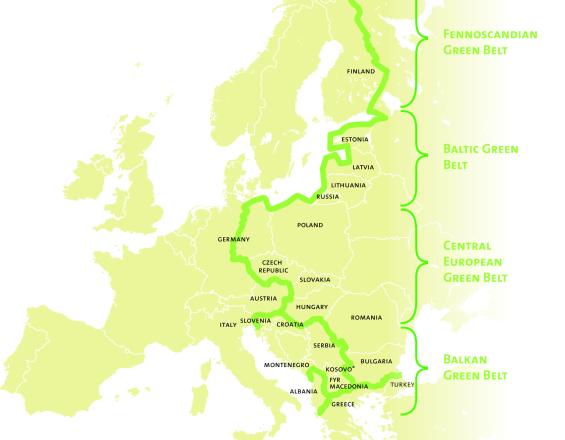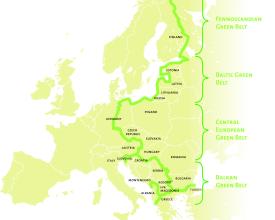Transboundary collaboration in the European Green Belt Initiative
Snapshot Solution

Map Green Belt © European Green Belt Association
The European Green Belt connects 24 countries and includes a vast range of landscapes from forests to coastal habitats. The European Green Belt Initiative is a transboundary collaborative project which includes nearly 150 governmental and non-governmental organizations, enterprises and scientific institutions, with the shared goal to conserve biodiversity, support local communities and aid natural resource management.
Last update: 29 Mar 2019
4195 Views
Impacts
• Ground-breaking steps to establish a sustainable governance structure were taken in 2012 with the creation of the ‘Coordination Group’, which was designed to develop the European Green Belt Initiative, organize Pan-European Green Belt conferences and oversee communication. This process lead to the official establishment of the European Green Belt Association e.V in February 2015.
• Despite there being marked differences in the four sections included in the initiative; the Fennoscandian, Baltic, Central European and Balkan Green Belt regions, and that the Green Belt is often along former border zones, this project has been able to work with countries which have politically sensitive histories towards a shared conservation goal.
• Through the initiative, there are programmes in environmental education, cultural heritage and societal integration. For example, in the Fennoscandian Green Belt there is extensive transboundary park-to-park cooperation and collaboration by scientific organizations, which are supported by government-level political decisions.
